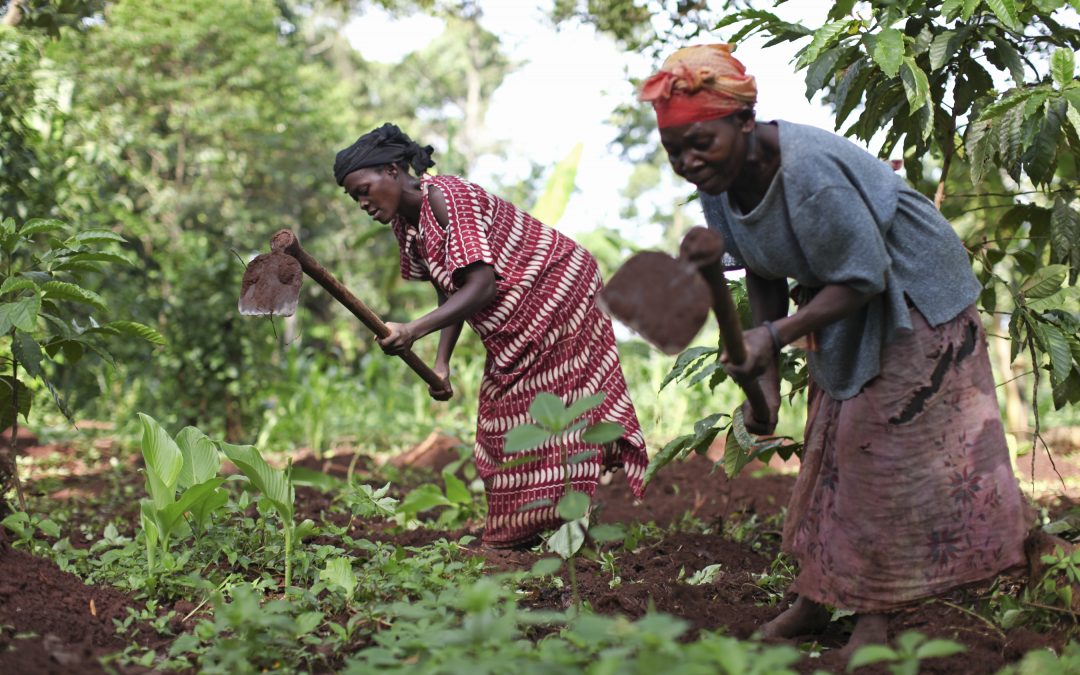
KAMPALA – All across Uganda, people depend on a number of different sources of income to survive however, growing and selling crops is the main source of income for almost half of rural households a report has revealed.
These findings were released by the Food Rights Alliance and Twaweza in a factsheet entitled livelihoods under COVID-19: #1 Agricultural Practices.
The factsheet is the second? in a three-part series of impact assessments based on data from Sauti za Wananchi, Africa’s first nationally representative high-frequency mobile phone survey. The findings are based on data collected from 1,600 respondents across Uganda in May and June 2020.
According to the report, in urban areas, 1 out of 4 citizens (25%) rely on casual labour as their main source of income, the same share as rely on growing and selling crops.
At the same time 1 out of 5 (22%) depend on casual labour for income, similar to urban areas.
“One of the bigger differences between rural and urban households is the reliance on formal employment or a salaried job: twice as many urban Ugandans (13%) rely on this as rural Ugandans (7%). However rural households (16%) are more likely than urban households (9%) to generate income from animals and animal products,” reads an excerpt.
Although urban households are more likely to be engaged in different types of businesses, the findings indicate that the differences between rural and urban areas is not very large as 14% of rural households and 17% of urban households rely on retail or manufacturing businesses while 13% of rural households and 18% of urban homes rely on non-agricultural services businesses.
“Interestingly, 1 out of 10 urban households (8%) depend on remittances compared to 1 out of 20 (6%) rural homes,” reads an excerpt.
Looking at agricultural activities more generally, half of rural Ugandan households (54%) grow food crops compared to 1 out of 3 urban households (32%).
The findings further reveal that livestock rearing is also more common among rural homes (20%) than urban ones (12%), as are commercial crops (15% in rural areas, 9% in urban areas).
But poultry rearing is similar across both groups (14% of rural households compare to 12% of urban homes).

In terms of what crops people grow, the report shows that four crops are cultivated by more than 10% of people: maize (31%), beans (28%), cassava (16%), groundnuts (12%).
“Despite this distribution of crops grown, maize dominates in terms of acres with on average 15 acres dedicated to maize cultivation compared to one acre or less for all of the other individual crops.”
According to the report, this planting season seems to have generated some challenges as 4 out of 10 farming households (38%) planted less compared to the last season.
A further 4 out of 10 (38%) planted the same as the previous season and 2 out of 10 households (24%) planted more.
Among households that do grow crops, 2 out of 3 grow enough to store crops after the harvest.
“For most of them, this lasts until the next harvest, but for a significant minority the crop do not last until the next harvest. Among those who grow but do not store crops, almost half say it is because they consume everything they harvest,” the report reads.
In regards to livestock, goats are the most commonly reared animal (7% of households herd goats).
However, 1 out of 10 citizens (10%) rear different types of chickens. People also tend to own, on average, more chickens than other types of livestock. Households own, on average, 6 indigenous chickens, 4 broiler chickens and 4 layers, and 3 goats.
Marie Nanyanzi of Sauti za Wananchi at Twaweza, said Ugandans often have more than one source of income to ensure they can meet their household needs.
“Even urban households rely significantly on agriculture for their income and food security, suggesting that urban agriculture is a vital area for support,” she added.
According to Nanyanzi, cultivation in urban areas can help to increase resilience to shocks for poor households and can help to regulate the supply of food in urban areas.
In her remarks, Agnes Kirabo the Executive Director Food Rights Alliance said agricultural production is the bedrock of people’s livelihoods and survival, in both rural and urban settings.
Although the report shows high levels of dependence on agriculture among Ugandans, Kirabo says the sector has not received appropriate consideration in terms of planning, governance and budget allocations.
“The Covid-19 pandemic” she continued, “is a stark reminder to the government to restore the agricultural sector to primacy given its role in macro-economic stability, human security and national stability. Appropriate interventions in planning, financing and governance are required as a matter of urgency,” Kirabo added.





